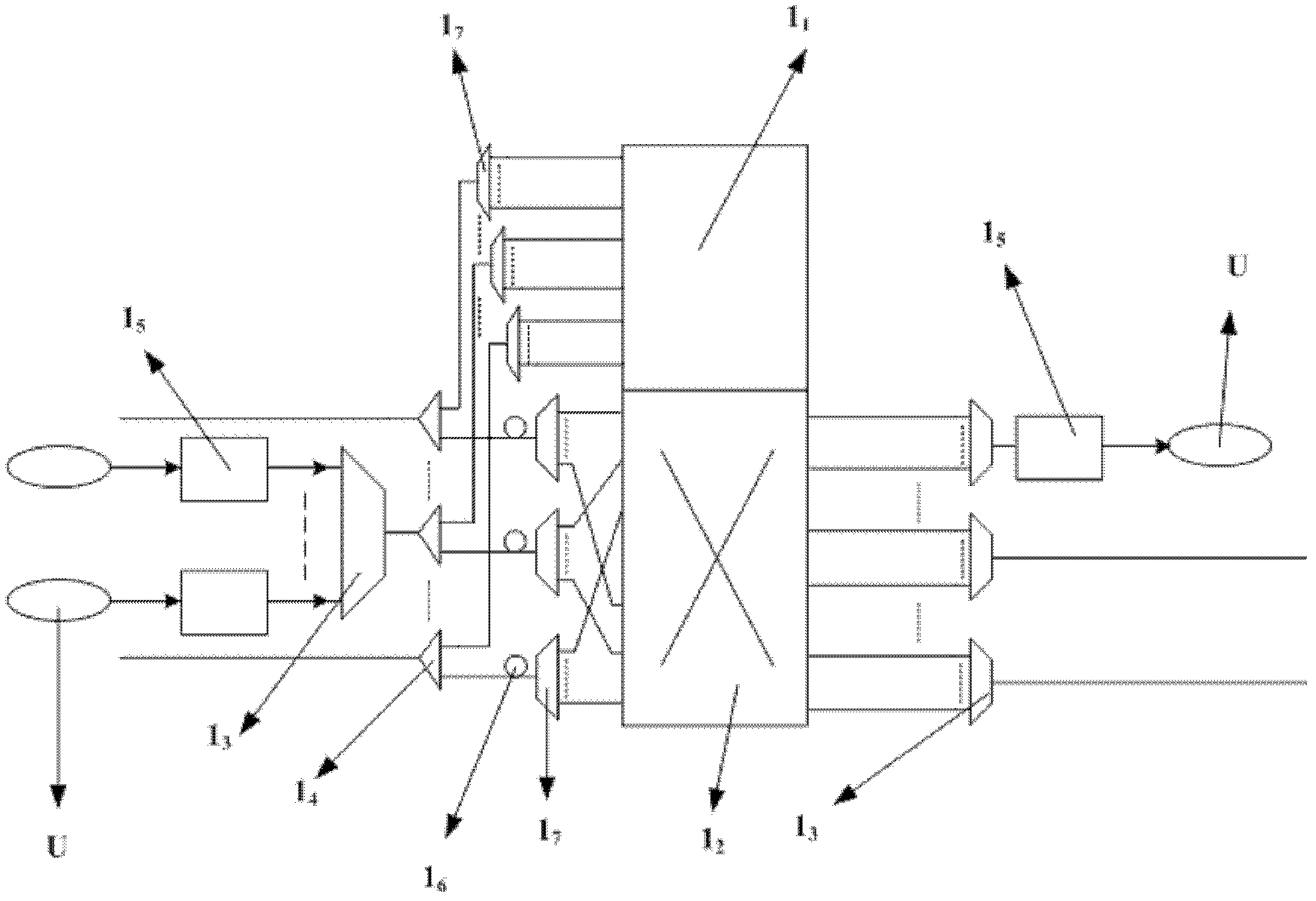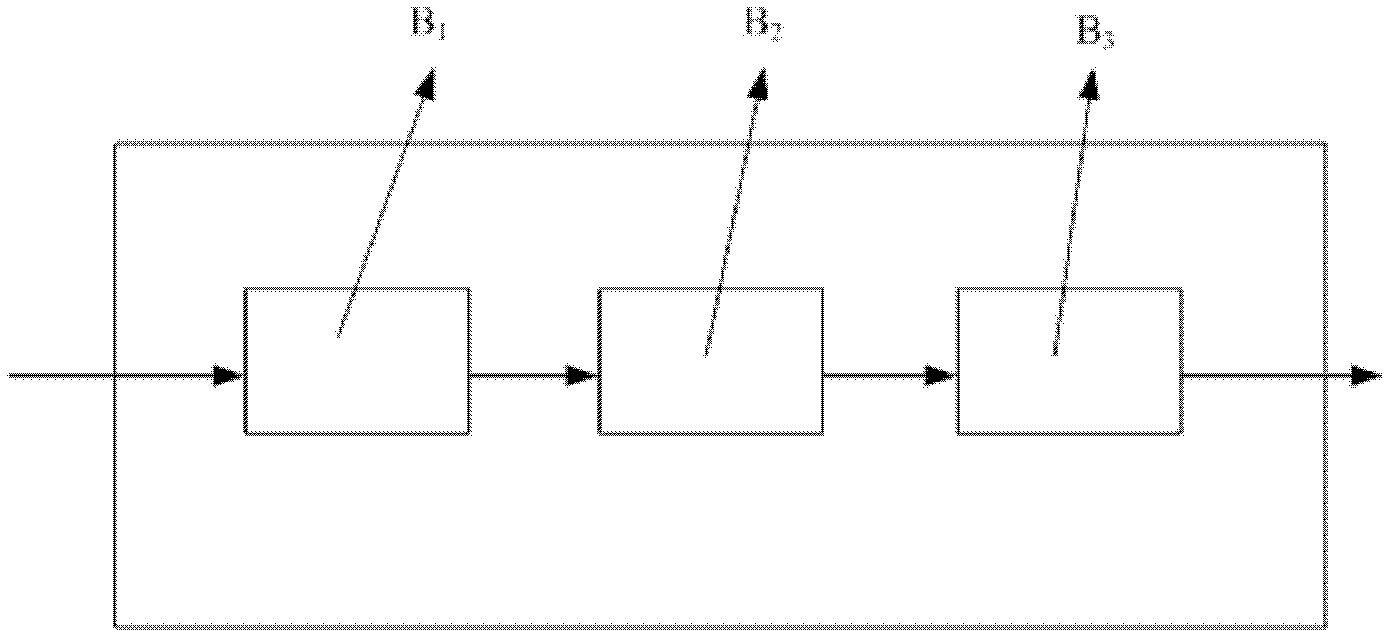Asynchronous multi-wavelength mesh network adaptive node system based on optical packet switching
An optical packet switching and multi-wavelength technology, applied in the field of communication, can solve the problems of not being able to meet the requirements of low-latency real-time performance, not being able to meet user burst business, and low switching efficiency between nodes, so as to meet the bursty demand of business data , Meet the user's sudden data and real-time requirements, and meet the effect of data sudden demand
- Summary
- Abstract
- Description
- Claims
- Application Information
AI Technical Summary
Problems solved by technology
Method used
Image
Examples
Embodiment 1
[0021] Adaptive node architecture of multi-wavelength mesh network based on asynchronous optical packet switching such as figure 1 shown.
[0022] An asynchronous multi-wavelength mesh network adaptive node system based on optical packet switching, including N access user terminals (U).
[0023] refer to figure 1 , the node is controlled by the control unit 1 1 , optical conflict resolution and switching unit 1 2 , optical multiplexer 1 3 , optical beam splitter 1 4 , edge router 1 5 , fiber optic delay line 1 6 , Optical Demultiplexer 1 7 composition. Access user data passes through edge router 1 5 The sending end and the optical multiplexer 1 3 The input end connection is used to multiplex multiple optical signals into the optical fiber using Dense Wavelength Division Multiplexing (DWDM) technology, optical multiplexer 1 3 The output end passes through the optical fiber and the optical beam splitter 1 4 connection, optical beam splitter 1 4 One output of the opt...
Embodiment 2
[0027] refer to Figure 4 ,
[0028] Taking the three-level node mesh network as an example, it is defined that each level of nodes is in a peer-to-peer position. Each level of nodes has N network access clients, and so on, multi-level node expansion is possible. Define the signal sent from the node as the add signal, and the signal received by the node as the drop signal.
[0029] The user data stream generated by the N network access users carried by the node is connected to the node conflict resolution and switching unit through Dense Wavelength Division Multiplexing (DWDM) technology. Similarly, the data generated by the network access users of N external nodes is passed through DWDM technology is connected to this node.
[0030] Network access users regularly transmit user data information, such as user status, user requests, user feedback, etc., to the connected node through the control channel, and this node also regularly transmits the access user data information, ...
PUM
 Login to View More
Login to View More Abstract
Description
Claims
Application Information
 Login to View More
Login to View More - R&D
- Intellectual Property
- Life Sciences
- Materials
- Tech Scout
- Unparalleled Data Quality
- Higher Quality Content
- 60% Fewer Hallucinations
Browse by: Latest US Patents, China's latest patents, Technical Efficacy Thesaurus, Application Domain, Technology Topic, Popular Technical Reports.
© 2025 PatSnap. All rights reserved.Legal|Privacy policy|Modern Slavery Act Transparency Statement|Sitemap|About US| Contact US: help@patsnap.com



